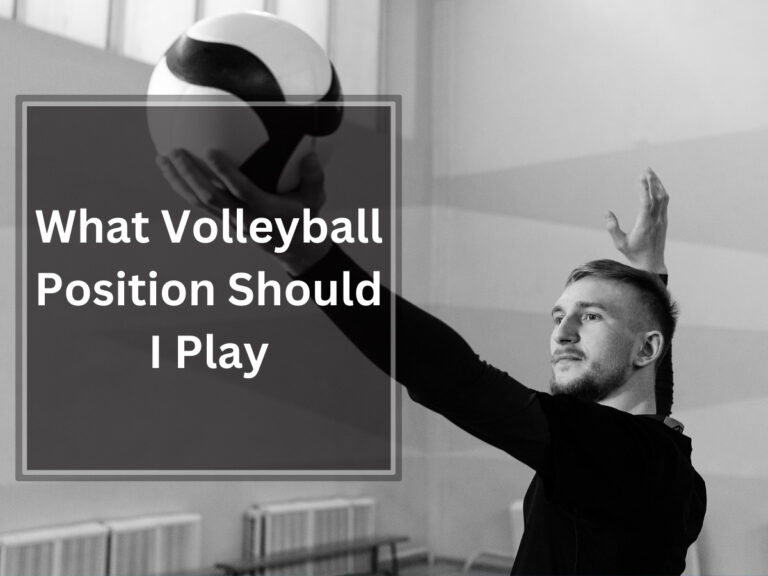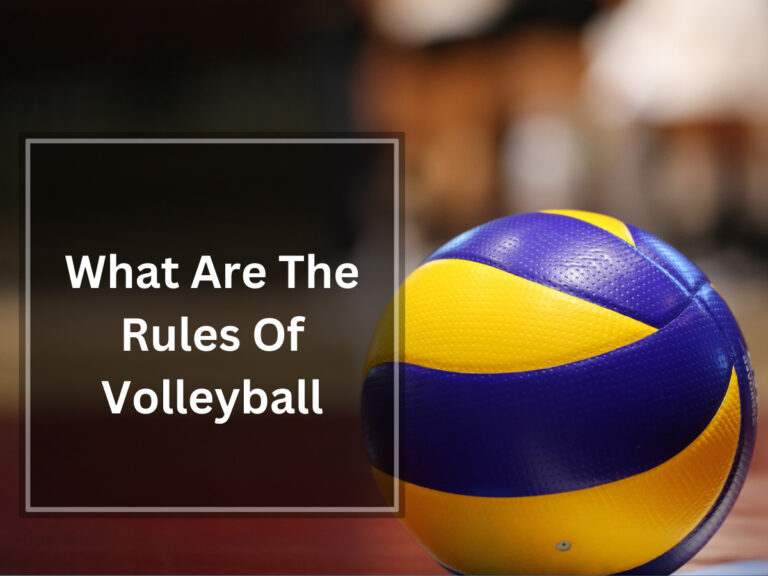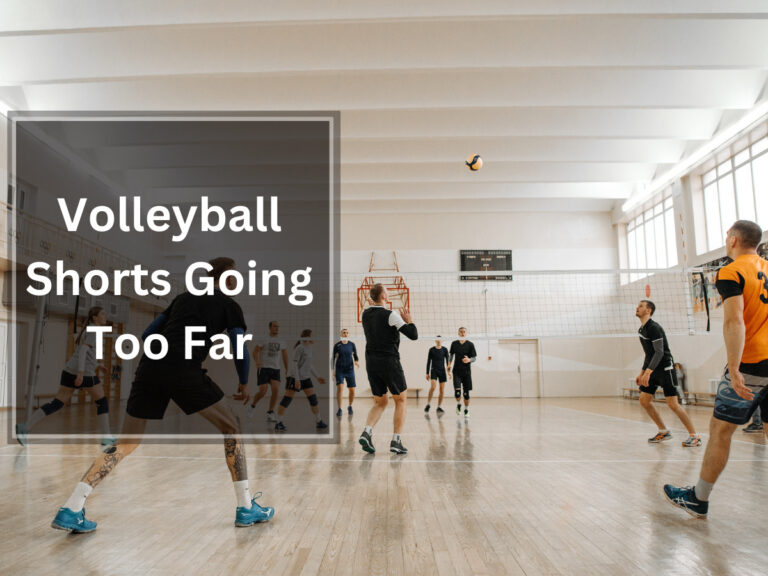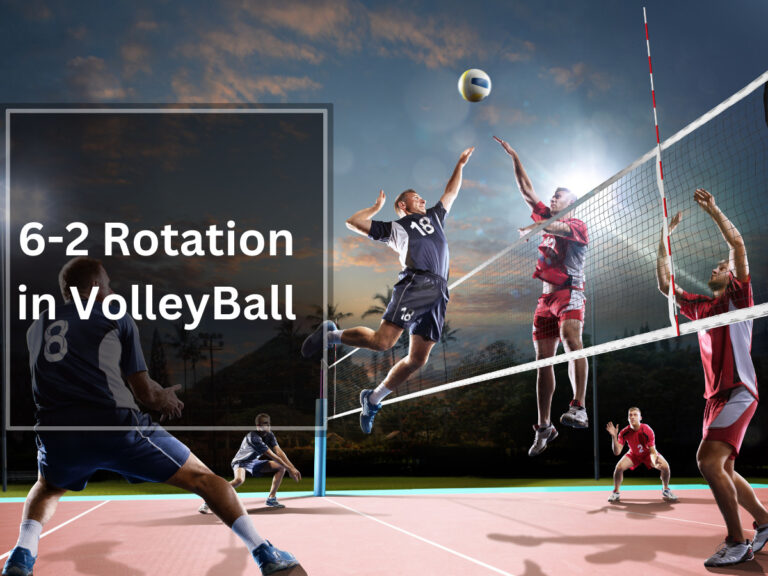Can You Kick The Ball In Volleyball ? Rules & Strategic Use
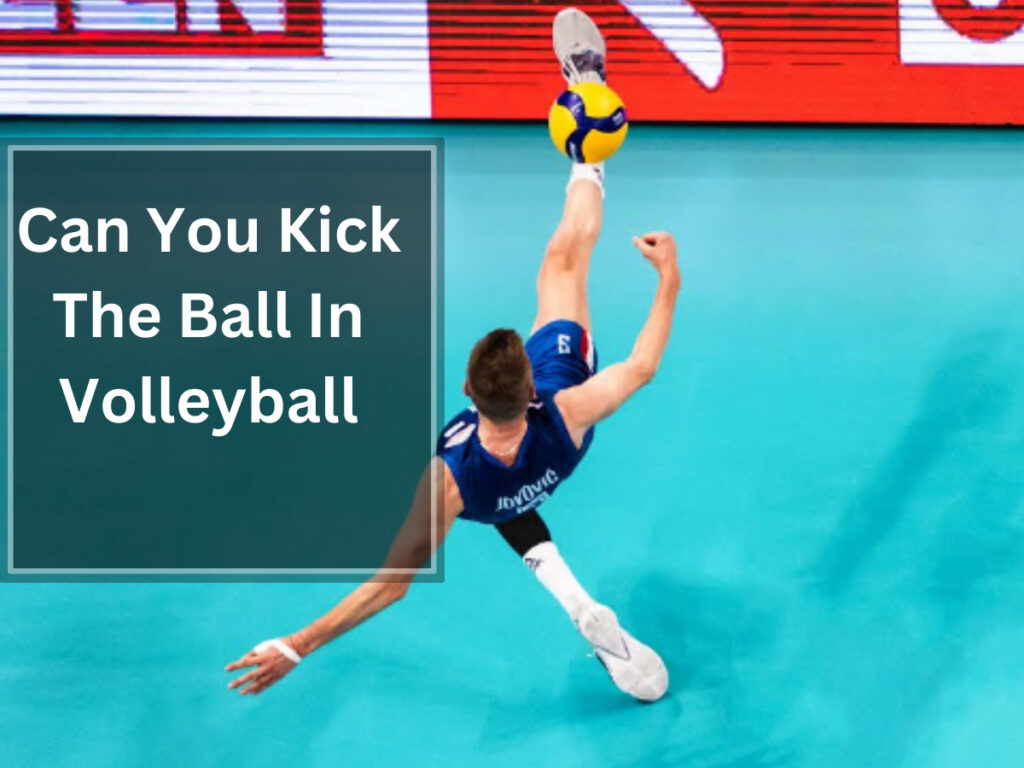
Hey there volleyball enthusiast! Have you ever wondered if kicking the ball is allowed in volleyball? Well, the answer is not as straightforward as you might think. Different leagues and rules have their own take on this matter. In some leagues, like USAV, players can use any part of their body, including their feet, to make contact with the ball. However, in U.S. high schools and junior high schools, intentionally using anything below the waist is a big no-no.
Now, before you start practicing your soccer skills on the volleyball court, it’s important to understand why kicking is generally discouraged. There are several reasons for this – penalties, negative impressions, wasted time, and even a lack of mental strength.
But don’t worry! In this article, we’ll explore all aspects of kicking in volleyball – from the FIVB rules to strategic use and training considerations.
So grab your knee pads and get ready to dive into the world of kicking in volleyball!
FIVB Rules on Kicking
Now let’s dive into the FIVB Rules on kicking in volleyball and see how you can strategically use your feet to make some spectacular plays on the court!
The FIVB allows players to use any part of their body to play the ball, including their feet. This rule change was implemented in 1993 to create more excitement and extended rallies.
Kicking the ball can provide strategic advantages in certain situations, such as defense or after a block. It allows players to save the ball when it is out of reach or control it better when it is going out of bounds.
However, it is important to be mindful of the rule implications. Kicking should be done strategically and not become a bad habit that compromises control and precision. Coaches may have concerns about damaging volleyballs or consider it poor match etiquette, particularly in younger leagues.
Remember, while kicking can be an exciting skill to showcase on the court, focusing on other important skills and situations in volleyball should remain a priority.
When Can You Kick the Ball
During defensive plays, players can use their legs to keep the ball in play, which can lead to spectacular saves and extended rallies. Using feet in volleyball has its advantages, especially in fast-paced situations where the ball is out of reach for a hand touch.
Kicking the ball allows players to quickly react and make contact with the ball when it would otherwise be impossible. It provides an alternative method for controlling a ball that is going out of bounds or stuck between the net and a blocker.
Additionally, kicking can add excitement and unpredictability to the game, as it introduces a different skill set compared to traditional hand touches. While not commonly used, kicking can be a valuable tool for players who have developed their leg control and coordination.
Reasons to Avoid Kicking
However, it’s important to be aware of the drawbacks and risks associated with using your feet in volleyball. While kicking can be a last resort in certain defensive situations, there are disadvantages to relying on your feet.
Firstly, controlling the ball with your hands is generally easier and allows for better precision and control.
Kicking can also become a bad habit if used too frequently, leading to less effective plays and potentially compromising your team’s performance.
Additionally, kicking is not suitable for positions that require reception or setting skills.
Coaches often discourage kicking as it increases the chances of losing the ball during practice and may reflect poorly on the team’s etiquette.
It is essential to focus on developing other more important skills in volleyball rather than specifically practicing kicking.
Coaches’ Dislike of Kicking
Coaches dislike kicking in volleyball because it can lead to less control and precision. From their perspective, kicking the ball has several disadvantages.
First, controlling the ball with your hands is generally easier and allows for better accuracy. Practicing with hands also helps develop better control and skills overall.
Second, kicking can become a bad habit in certain situations, especially for reception or setting positions where precise movements are crucial.
Furthermore, coaches have concerns about damaging volleyballs if players consistently use their feet instead of their hands.
Lastly, coaches may view excessive kicking as reflecting poorly on the team’s technique and match etiquette, particularly in younger leagues where proper skills development is emphasized.
Strategic Use of Kicking
Strategically using your feet can be a fantastic finesse move that keeps the play alive in specific defensive situations. Kicking the ball in volleyball offers strategic advantages and allows for impressive defensive saves.
When the ball is out of reach or stuck between the net and the blocker, using your legs can be the only solution to keep it in play. It provides a quick and unexpected way to redirect the ball back into play, catching opponents off guard.
Kicking allows for greater control over a ball that is going out of bounds, giving you the opportunity to save it and continue the rally. This skill showcases agility and adaptability on the court, adding excitement to the game while demonstrating your ability to think on your feet.
Benefits of Controlling with Hands
Now let’s discuss the advantages of using your hands to control the ball in volleyball.
When it comes to controlling the ball, using your hands offers several benefits. Firstly, it allows for better precision and control compared to kicking with your feet. With your hands, you can easily direct the ball where you want it to go, whether it’s setting up a teammate or placing it strategically over the net.
Additionally, practicing with your hands develops essential skills such as hand-eye coordination and touch sensitivity, which are crucial in various positions on the court.
On the other hand, relying on your feet can have its disadvantages. Kicking may result in less accuracy and control over the ball, making it unsuitable for reception or setting positions.
Therefore, mastering proper hand techniques is vital for success in volleyball.
Situations for Kicking
During fast-paced defensive situations, using your legs can be the only solution to keep the ball in play. Kicking techniques in volleyball have their advantages, especially when the ball is out of reach for your hands. Proper positioning is crucial in defense, and sometimes kicking can help save the ball when it’s just beyond your arm’s reach.
Additionally, kicking can be necessary when the ball gets stuck between the net and a blocker during a block. In these situations, using your legs is often the only solution to keep the rally going. While kicking may not be as precise as using your arms, it can still be a valuable skill to have in certain defensive scenarios.
Practice and experience will help you develop this natural ability to use your feet effectively in volleyball.
Training Considerations
When it comes to developing your skills in volleyball, training considerations should prioritize other aspects of the game.
While kicking the ball can be useful in certain situations, it is not a skill that requires specific training techniques or dedicated kicking drills.
Instead, players should focus on honing their fundamental skills such as passing, setting, serving, and hitting. These skills are essential for success in volleyball and will have a greater impact on your overall performance than practicing kicking.
Regular training sessions that include reaction drills, playing 6 against 6 games, and participating in other sports like football or soccer can help develop the natural ability to use your legs effectively when needed.
Remember to prioritize these foundational skills to become a well-rounded player on the court.
Frequently Asked Questions
Is it legal to kick the ball in volleyball?
Yes, it is legal to kick the ball in volleyball. Kicking techniques can have an impact on gameplay, especially in defensive situations or when the ball is stuck between the net and the blocker.
Are there any situations where kicking the ball is allowed?
In certain situations, kicking the ball is allowed in volleyball. It can be used as a last resort in defense, after a block, or when the ball is going out of court. Kicking can lead to spectacular saves and help keep the ball in play. Strategies for using kicks include controlling the ball with precision and using feet when hands are not an option. Coaches may have concerns about damage to volleyballs and etiquette, but kicking can be a useful skill that develops naturally with experience.
Why do coaches generally discourage kicking the ball?
Coaches generally discourage kicking the ball in volleyball because it decreases control and precision, increases the chances of losing the ball, and is not considered good match etiquette. There are alternative techniques that develop better skills and strategy.
What are the benefits of controlling the ball with your hands instead of your feet?
Controlling the ball with your hands in volleyball provides several benefits. It allows for better control and precision, especially in reception and setting positions. Hand control also enhances game strategy and tactics, enabling more accurate passes, sets, and attacks.
Should players specifically practice kicking the ball in volleyball?
To improve your overall skills in volleyball, it is not necessary to specifically practice kicking the ball. Instead, focus on developing footwork techniques and hand-eye coordination, which are crucial for success in the sport.





